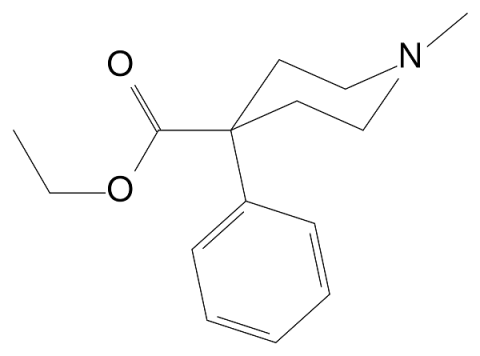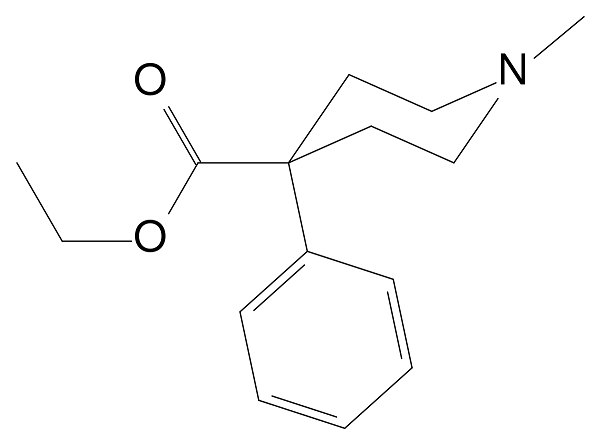Dolargan (pethidine): Uses, uses and precautions

What is Dolargan (pethidine)? How is the drug indicated in pathological cases? How to use it and what are the things to keep in mind during the course of taking the drug? Let's learn and analyze Dolargan with SignsSymptomsList through the article below!
Name of active ingredient: pethidine hydrochloride.
Names of some brand-name drugs containing similar active ingredients: Dolcontral, Pethidine-hameln...
content
- 1. What is Dolargan?
- 2. Uses of the drug Dolargan
- 3. Cases in which Dolargan should not be used
- 4. Instructions for taking Dolargan
- 5. Side effects
- 6. Drug interactions when using Dolargan
- 7. Notes when using Dolargan
- 8. Special subjects when using Dolargan
- 9. Handling when overdose of Dolargan
- 10. What to do when you miss a dose of Dolargan®
- 11. How to store Dolargan
1. What is Dolargan?
Dolargan is an injectable drug containing the active ingredient pethidine hydrochloride, including the following strengths: 25 mg/ml, 50 mg/ml, 75 mg/ml, and 100 mg/ml.
Pethidine, a phenylpiperidine derivative, is a synthetic opioid analgesic. It is used to relieve most forms of moderate to severe pain, including labor. Because of the shorter duration of action and accumulation of the neurotoxic metabolite norpethidine with repeated administration, pethidine cannot be used for chronic pain.

The structure of pethidine
2. Uses of the drug Dolargan
Dolargan is indicated in several cases:
- Pain relief in moderate and severe pain.
- Pain relief in obstetrics.
- Use preoperatively to increase anesthetic effect.
- Bile colic, renal and ureteral colic.
- Tumor pain cannot be controlled with mild analgesics.
Keep in mind that this is a prescription drug and should only be used under the direction of a doctor.
>> Read more: Idarac pain reliever (floctafenine): Uses, usage and things to note .
3. Cases in which Dolargan should not be used
The drug is contraindicated in the following cases:
- Allergic to pethidine or to any of its ingredients.
- Severe liver disease, severe liver failure with biliary tract disorders.
- Severe kidney failure .
- Respiratory failure, chronic obstructive pulmonary disease, bronchial asthma.
- Increased intracranial pressure, brain damage.
- Confusion, agitation, convulsions.
- Abdominal pain undiagnosed.
- Are taking an MAO inhibitor (eg, phenelzine, tranylcypromine, moclobemide, selegiline) or have stopped taking it for less than 14 days.
4. Instructions for taking Dolargan
4.1. Dosage
Dolargan is a drug prescribed by a doctor. Dosage should be adjusted according to the age and symptoms of each patient. The dose of the drug will vary from person to person. You should note that the doses shown below are for reference only . Therefore, you must not arbitrarily take but must strictly adhere to the dose that the doctor instructs.
- For analgesia , IM or subcutaneously at a dose of 25-100 mg each and slowly intravenously at a dose of 25-50 mg each time, repeat injection after 4 hours. For postoperative pain, doses may be administered subcutaneously or intramuscularly every 2 to 3 hours if needed. Should switch to other analgesics to avoid complications due to circulatory and respiratory failure after surgery.
- For obstetric analgesia , 50 mg may be administered intramuscularly or subcutaneously as soon as contractions occur at regular intervals. This dose may be repeated after 1-3 hours. Attention should be paid to respiratory and circulatory monitoring if used many times.
- To prepare for anesthesia , 25-100 mg can be injected intramuscularly about 1 hour before surgery. Similar doses can also be administered subcutaneously. For use as an adjunct to anesthesia, 10-25 mg may be given slowly intravenously.
- Pediatric Dosage : It is used for the relief of moderate to severe acute pain and for the preparation of anesthesia in children. To relieve pain, can be injected intramuscularly at a dose of 0.5-2 mg/kg, repeated after 4 hours (if necessary). For postoperative pain, this dose may be given intramuscularly every 2-3 hours (if needed).
- Hepatic impairment: The drug should be used with caution in patients with severe liver failure. Consider giving a lower initial dose.
- Renal impairment: The dose should be reduced depending on the degree of renal impairment and should not be used in severe renal impairment.
- Elderly: Dosage should be reduced. Do not take more than 50 mg at a time (intramuscular).
The American Association for the Study of Pain recommends avoiding use in the elderly and in people with renal impairment.

Dosage when using Dolargan drug should be prescribed by a doctor
4.2. How to use
Dolargan is used parenterally. Therefore, you need medical help. Do not arbitrarily use drugs without medical supervision.
5. Side effects
Unwanted effects you may experience when using the drug:
- Skin: Local reaction after injection.
- Gastrointestinal: Nausea, vomiting .
- Immunological: Increased plasma histamine concentration, accompanied by decreased blood pressure, tachycardia, erythema, increased plasma adrenaline concentration.
You should inform your doctor about any unwanted effects you experience while using the drug.
6. Drug interactions when using Dolargan
You should not use concurrently with:
- MAO inhibitors (such as phenelzine, tranylcypromine, moclobemide, selegiline...) or have been stopped for more than 14 days.
- Concomitant use of pethidine and phenothiazines causes episodes of severe hypotension and may prolong pethidine-induced respiratory depression.
- Analgesics have opiate and barbiturate-like properties due to possible additive inhibitory effects on the central nervous system.
- Cimetidine inhibits the metabolism of pethidine in the liver, leading to respiratory depression and sedation.
7. Notes when using Dolargan
A few notes when using the drug such as:
- You should not stop taking the drug suddenly after long-term use because it can lead to withdrawal syndrome.
- Respiratory and circulatory failure should be monitored when administered intramuscularly or intravenously, especially in severe patients with organ failure (kidney, pulmonary, circulatory).
- Pethidine should be used with caution in patients with a history of seizures or supraventricular tachycardia .
- Caution should be exercised when using pethidine in patients with renal failure.

Patients with ventricular tachycardia should be careful when using Dolargan
8. Special subjects when using Dolargan
8.1. Pregnant and lactating women
Pethidine is widely used to relieve pain during labor. It is necessary to use pethidine correctly to avoid drug addiction for mothers and babies.
No adverse reactions have been observed in breastfed infants whose mothers are taking pethidine, therefore women taking pethidine can breastfeed.
Consult your doctor before taking the medicine.
8.2. Drivers or operators of machinery
Do not drive or operate machinery after taking the medicine.
9. Handling when overdose of Dolargan
Symptoms: There are signs of respiratory depression, somnolence progressing to stupor or coma, musculoskeletal laxity, cold and moist skin, sometimes bradycardia and low blood pressure . More severe cases – especially intravenously – have respiratory arrest, circulatory collapse, cardiac arrest and possibly death.
When experiencing the signs listed above, you should stop taking the drug and immediately go to the nearest medical facility for timely treatment.
10. What to do when you miss a dose of Dolargan®
If you forget to take a dose, take it as soon as possible. However, if it is almost time for your next dose, skip the missed dose and take your next dose at the scheduled time. Do not take double the prescribed dose.
11. How to store Dolargan
Store the medicine in a cool, dry place, at a temperature of 15-25°C, away from direct light. Avoid freezing the injection solution.
Note: Keep out of reach of children and read instructions carefully before use.
Through this article, SignsSymptomsList has helped you answer the question of what Dolargan (pethidine) is, its uses, how to use it and what to keep in mind when using it. The use of the drug requires the guidance of the treating physician. In the process of using the drug, if any unwanted effects occur, please contact your doctor immediately for advice on the best solution!
Pharmacist Nguyen Hoang Bao Duy